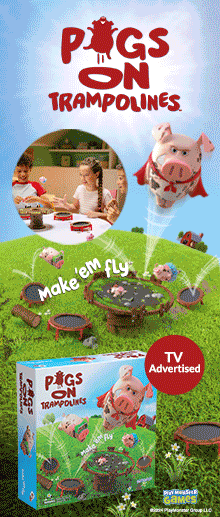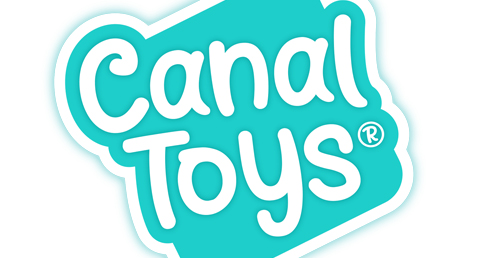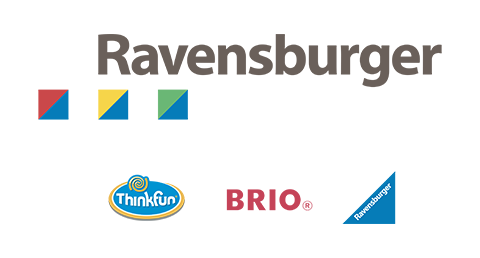I said last week that I wanted specific information on how Black Friday impacted the UK toy market before I joined everyone else in the media in pronouncing it the ‘biggest and best ever.’ I’m still in the process of piecing everything together, but there are already a few interesting threads emerging.
First, a caveat: it is difficult to directly compare Black Friday 2019 with last year’s event, as it took place in week 48 this year, as opposed to week 47 last year. It is also worth bearing in mind that Cyber Monday fell into week 49, so an accurate comparison requires a three week overview, which wasn’t available at the time of writing.
However, even taking all of that into consideration, the numbers aren’t exactly what you might have hoped for or expected, especially if you bought into all the media hype around Black Friday. According to NPD, this year’s combined weeks 47 & 48 numbers in the UK were down 13% on last year. Whether week 49 can claw significant share back remains to be seen, but these initial figures suggest that Black Friday didn’t drive the anticipated sales surge. Indeed, one person suggested to me that the event is becoming more of a reminder to consumers to start thinking about their Christmas shopping, rather than actually kick-starting physical sales in a major way. And lest you blame the UK election, I am given to believe that most other major global territories experienced a similar trend; many countries saw toy sales slide backwards, rather than leap forwards, over the Black Friday period.
Everyone now seems to be putting their faith in the final week of trading to redeem the situation. With one extra sales day after the weekend this year, there is sound reasoning behind the thinking. I bet if you ask around your office, there will be more people who admit that they haven’t even started their Christmas shopping yet than have finished it. Hope springs eternal. That said, surely there must be a limit to how much product can physically be moved through the chain at that stage – from the supplier to the retailer’s warehouse, then to store, then from backroom to shop floor, then through the tills, there are a lot of points where it can all fall down. You only have to look at the pictures of empty shelves at certain US retailers on Black Friday to see the magnitude of the challenge. Retail store workers will certainly not need to visit the gym much in the last few weeks of the year – with the amount of boxes they’ll be lugging about, most will rarely have felt fitter.
Of course, the decline in toy sales cannot be solely attributed to the success or otherwise of Black Friday; it may not even fully be down to intangible factors such as Brexit or the election. It is entirely plausible that there may be other – more fundamental, long-term – factors at work here. Perhaps we are witnessing a paradigm shift in consumer attitudes? Maybe those who have been suggesting that people are moving towards valuing social experiences over purely material possessions have a point? That would potentially explain why board games sales continue to rise in a tough market. Is there also an ‘environmental backlash’ which is beginning to affect toy sales? I bet every single one of us has people on both their personal and business social media feeds whose posts consist almost entirely of anti-plastic, anti- consumerism, anti-you-name-it diatribes. If this attitude impacts the purchasing decisions of only a single digit percentage of consumers, what does that equate to in terms of overall toy sales? NPD will be including a question in its post-Christmas survey asking consumers whether environmental factors were a factor behind their festive purchasing behaviour; it will be fascinating to see what the results say.
Whatever the reasons behind the current figures, there is no question that predicting what will happen this year has been tricky, even for people who have been in the trade for many years. I have heard the phrase ‘What’s going on’ (occasionally interspersed with an expletive or two) more than people listening to a Marvin Gaye album in 1971. I am constantly being told by suppliers that retailers’ order numbers are so far away from what they are used to, that they are struggling to make sense of it all. Huge accounts are falling way short of MOQs. Opening orders often appear to be missing a digit or even two – but they’re not. Some retailers are asking to buy domestically rather than FOB, shifting greater responsibility onto suppliers. Other retailers who could previously be relied upon for support are not necessarily the ‘bankers’ they once were.
We have already witnessed the first tangible casualty of this unforgiving trading environment, with the sad loss of Re Creation last week. The chances are that there may be more to follow. Yet there may be some light at the end of the tunnel. The decisive result of yesterday’s election may yet make a positive difference here in the UK: the pound has already risen sharply against the dollar, which suppliers will be delighted about. Across the pond, the news that Trump has signed off on a deal with China that should result in the latest round of tariffs being delayed could prove to be pivotal to the short term fortunes of the US market. These are factors way beyond our control, yet they may have a significant bearing on what happens next in both territories.
For now, we can only hope that a last-minute surge salvages something positive from a tough year. Including today, there are eleven days of trading left (or nine if you’re working at The Entertainer) – let us hope we can claw some of the current 9% deficit back. Game on!














